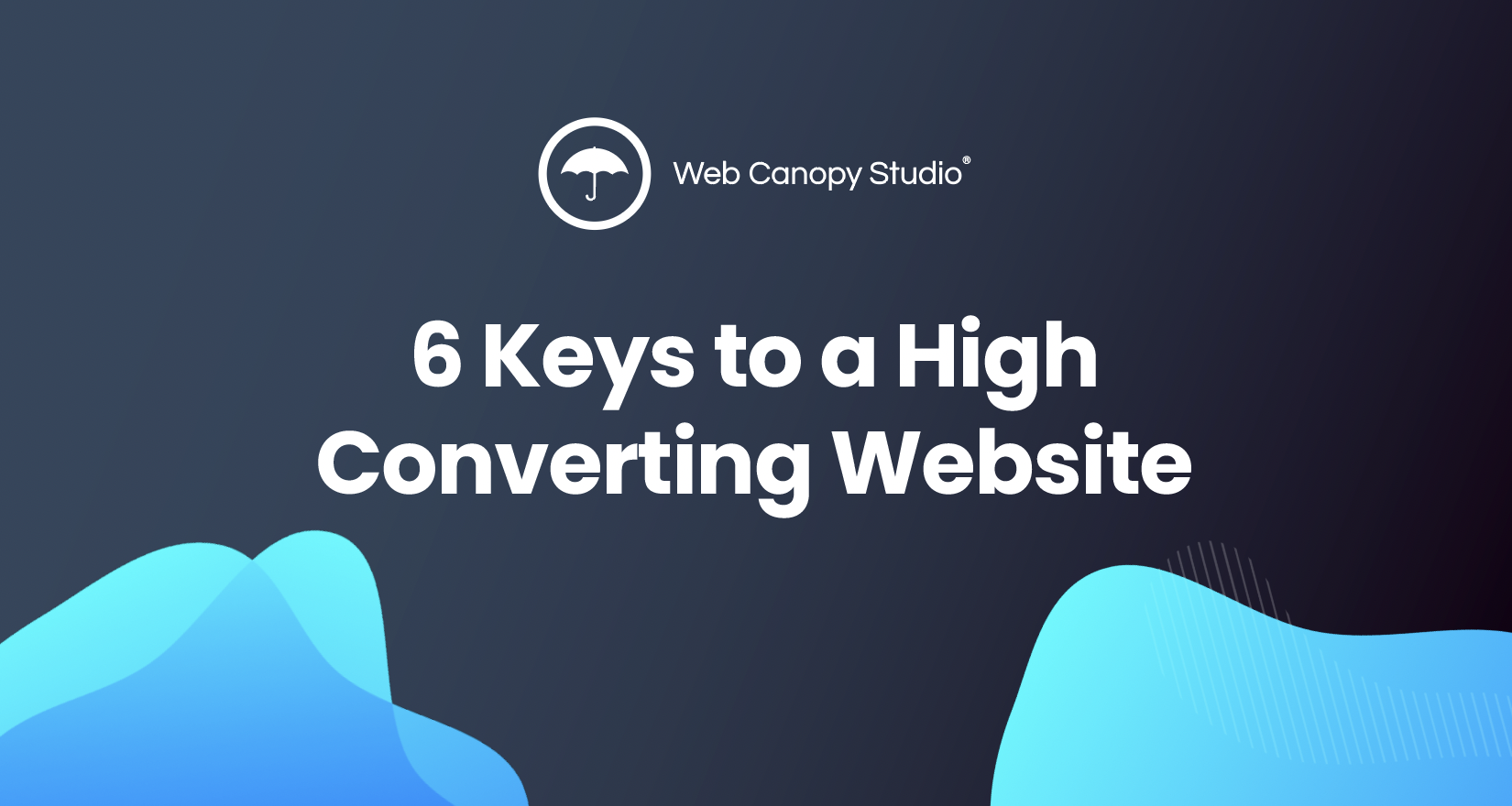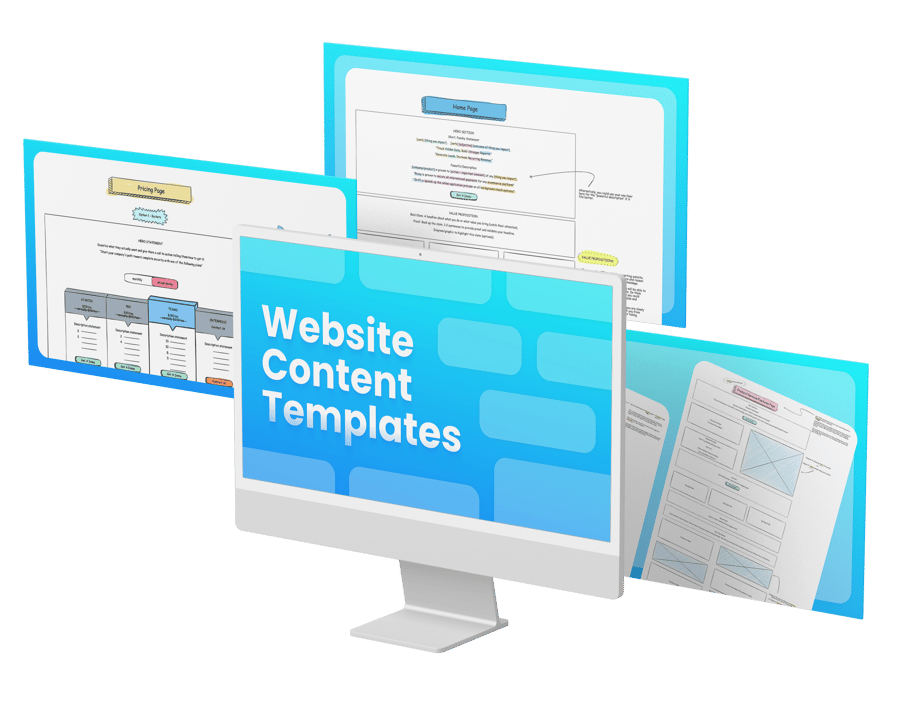One of the biggest questions we get asked all the time by clients, prospects, fellow agency owners, HubSpot community members, and people from all over the globe is…
“Do you guys see trends in what makes a website really successful and efficient?”
And a lot of the time the misconceptions they have are things like…
- We have to spend an insane amount of money to make a really great website, or
- We have to be constantly producing a lot of content on that website to make it do everything that we want to do.
Sometimes that can definitely be the case, but most of the time it’s certainly not.
First, we should probably determine what a “successful” website means.
To marketers, this could mean things like “good traffic,” or “low bounce rates,” or “lots of keywords ranking well for SEO.”
But if you’re a business owner, or you’re the one who is directly responsible for bringing in revenue for your business, you are thinking about this completely differently.
Those kinds of success metrics are what we call Vanity Metrics or metrics that don’t actually measure things that matter.
What good does a website with low bounce rates do if it’s not putting calls on the calendar?
What good does a site that has good SEO keyword rankings do if it’s not contributing revenue to the bottom line?
Here’s the secret…
not a lot.
Yes, those metrics are important in their own right, but are they the pillar upon which I want to hold up the credibility of my own marketing?
100% no.
So what are the things that matter the most? What are the most impactful things we can do to make our website perform better? What kind of information should I be tracking?
Start at the bottom.
Revenue. Calls booked. Leads nurtured. Conversion rates.
These are the core KPIs to tracking a successful website.
So how do we get there?
The Website Conversion Framework
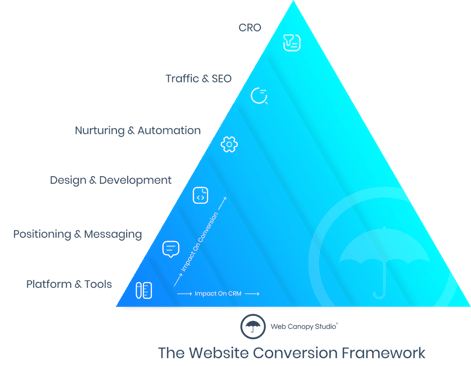
After over a decade spent working on thousands of websites, we've compiled six different areas of focus that you should consider in order to drastically improve your conversion potential, generating more revenue and booked calls for your company.
We’ve laid this out in a format called The Website Conversion Framework.
The pyramid in this image is divided into 6 categories inside this framework. As you look at this graphic, it is intended to be foundational in nature and expand out as the website evolves.
What that means is, the lowest corner of this framework should be your first area of focus, making sure you evaluate your website from that foundational element.
Each category of the framework builds on the previous category.
The better you perform at the lower levels of the framework means the more likely you are to have higher success in the metrics that matter as you scale out.
As you do the right things in each category starting at the bottom, you then move “out and up” into the next areas of focus.
It is extremely difficult to be successful in the areas further out in the framework without first nailing down the areas at the lower levels.
That doesn’t mean you can’t be effective at all categories right out of the gate.
It also doesn’t mean that you have to start your website from scratch, either.
This is simply a framework for evaluating what success looks like at various stages of your website’s ability to drive high-quality leads to your calendar week after week.
The 6 categories of the Website Conversion Framework are:
- Platform & Tools
- Positioning & Messaging
- Design & Development
- Nurturing & Automation
- Traffic & SEO
- Conversion Rate Optimization
We’re about to break down how all of these components are absolutely critical for your website to turn into a conversion machine.
But first, let’s discuss…
How Your Website Impacts Your CRM
As your website scales outside of the core components of the framework, the impact your website has on your conversion rates also increases. But that’s not all.
As you scale in the same way, you’re also scaling the impact your website has on your CRM.
Why are we considering CRM usage with the website?
Ah, I’m glad you asked.
What most businesses don’t realize is that your website is the best sales tool you could ever ask for.
- It works 24/7.
- It books calls on your calendar for you.
- It triggers automation, notifications, and tasks.
- It is a constant resource for new sales collateral.
- It builds credibility for the brand, doing the dirty work for you so you don’t have to worry about as mean leads not taking you seriously
- And, it delivers a never-ending stream of high-quality leads to the right person at the right time.
…That is, when you do it the right way.
The CRM is so impactful on the website that we believe it actually goes both ways.
What happens if just by simply updating your CRM regularly as you work deals and contacts the website experience actually changes, evolves, and improves for your prospects?
What would be the outcome if by simply doing the standard job of logging deals, taking notes, running playbooks, and updating the pipeline, you were actually:
- creating customized user experiences through personalization
- driving leads back to your website and enhancing what they see
- changing the content and structure of the page to be more in line with what they need to hear from you right then and there
Would that change the outcome or the likelihood of closing those deals?
You bet it would!
And it does.
So as you move through the Website Conversion Framework, succeeding at the lower levels of the core and expanding into the outer categories of the framework, you will see a tremendous impact on the CRM and the deals you’re closing over time.
However, let’s start at the very beginning and break down each of these components one by one.
Platform & Tools
The first element that we're focusing on is called platform and tools. This is foundational to your website’s stability and security.
Ultimately the platform & tools that you use can make or break a high converting website.
Whatever platform you choose, make sure it's easy to use from an editing standpoint, and even easier to navigate your way around the back end.
Do you need to rely on an experienced developer every time your website needs to update a plug-in?
Is your website secure and safe?
Do you need to rely on third-party plugins and developers just to keep it operational?
If it’s hard to navigate through these factors, it is best to consider other options.
I would argue if your website is not inherently easy to use to make updates and modifications without having to hire someone who knows how to code, it's probably not the right platform for your website.
Also, there are plenty of options that you could move to.
We recommend HubSpot for several reasons to accomplish this, but at the root of everything it boils down to:
- flexibility
- ease of use
- scalability
- connection to CRM
Positioning & Messaging
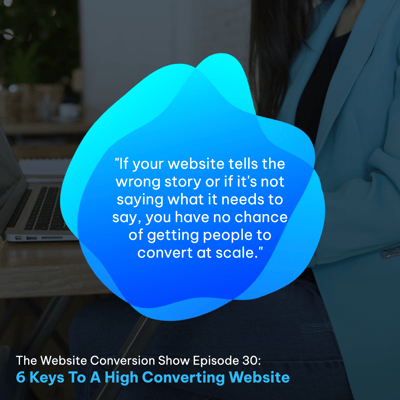
This section of the Website Conversion Framework is arguably the most important focus area in terms of actual conversion.
This is 95% of what constitutes a successfully converting website (completely made-up statistic by the way, but probably accurate).
So if your website:
- tells the wrong story
- is not saying what it needs to say
- focuses on your company and not the problems you solve
you have virtually no chance of getting someone to become a lead.
The sad thing is, people spend ridiculous amounts of money on a beautiful website for their brand… but at the end of the day, they don’t take into account the buyer’s journey and how their visitors literally need them to guide them along the way.
This leads them to a poor experience. This leads them to an experience that is confusing and doesn’t deliver. And this ultimately leads them to bouncing, or exiting the site prematurely (and never to return).
If you're not booking enough calls or demos on your calendar at the volume that your sales team needs, you have a serious problem in this area.
Going back to the platform category for just a moment - you can start to see why you need to make sure your platform is the right fit.
If you need to rely on a developer to make minor positioning or layout edits for you, you’re preventing yourself from generating the leads you need… which is equal to throwing dollar bills in the trash.
How do you know if you’re doing this right?
The quick test is this:
if your website is talking more about:
- you and your products or services
- what you know and why you’re a great company
- your accolades and awards
- how many years you’ve been in business
- or how your features are the best thing in the world
… Then, you're failing miserably. You must spend the right amount of time talking about your customers and their problems. NOT yourself.
Design & Development
Design and development are often overlooked. This does not mean you should be worried about how pretty your website is.
What It does mean is that we need to look at the website from the perspective of the User Experience (UX) your visitors have.
Do your website visitors, prospects, or customers enjoy interacting with your website? Or do they get distracted and confused by it?
Or is the customer interaction completely absent overall?
Your website should lift your brand up and it should enhance the message from the previous section.
Again, we’re referencing the lower levels of the framework first, then we expand out.
First, the website should look presentable. That’s a given. If it looks ugly and is a poor user experience, there’s no reason why someone would even care to stick around.
Second, the website must encourage engagement in some format.
You can achieve this in many different ways, but one of the easiest ways to enhance the UX is to ensure you’re creating opportunities that are built into the overall design of the site for lead capture.
This is not a new concept; many companies (probably yours!) are already using forms, landing pages, etc.
However, utilizing interactive elements like calculators, quizzes, chatbots, and more are fast and easy ways to expand the user experience almost immediately.
If you're not on a platform like HubSpot, you’re actually able to do this with no problem at all.
Consider how you can make the UX better for your visitors, and make sure to engage those visitors to keep them staying around longer, exploring more of your site, and coming back again and again.
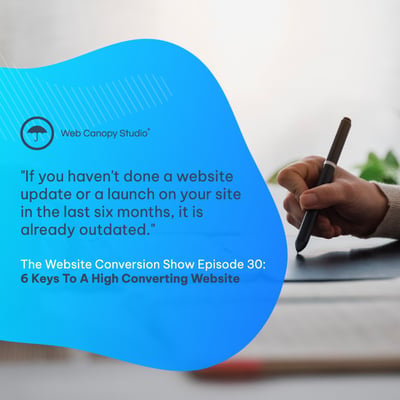
Nurturing & Automation
Capturing leads is one thing…
…Actually getting them to come back to your site or stay in your pipeline is a completely different ball game.
Is it your sales team's job to be the sole party responsible for getting these leads to make a purchase?
Absolutely not!
Making sure you have the ability to add contacts into the CRM once they fill out a form is vital to your success.
Making sure you’re doing something with those leads is equally as vital.
So many marketers focus on collecting the contact information, and then sending those leads to sales or sending them a couple of emails as a follow-up.
But What actually happens though?
People don't do what we want them to do.
They don't come back to the website.
They don't end up booking a call with the sales team.
They don't get a demo.
And so now you're stuck with all these people inside your database that are just sitting there and taking up space.
It's like you're paying for this inventory in the back room, and they're just sitting there. These are contacts that you are paying for and that you’re not engaging.
So engage them!
This is about delivering an ongoing experience.
The UX of the design (previous phase) doesn’t stop there. It continues on after the conversion happens.
You need to deliver the right kind of content or calls-to-action to the right people after they convert.
In a perfect world, what you should be doing is engaging the CRM as soon as somebody becomes a lead.
At the base level, you’re creating a lead and you’re triggering the proper follow-up.
However, if that content isn’t compelling and if it’s not further enhancing their experience by solving their problems, giving them resources, and offering value to them, you can more than likely consider it a lost cause.
It doesn’t end with that, though.
You also can explore segmenting the contacts into lists based on:
- the kinds of companies that are engaging
- who they are (role)
- what you want them to do next (demo? call? webinar? etc.)
- what information they truly need
You absolutely want to make sure you continue to provide that information to them in an ongoing fashion.
But what does that look like?
Well, you can do that through different types of content on the website based on the different problems they are engaging with.
“If someone has this problem, then they probably feel like xyz.”
You can do this by creating specific pages on your website about solving those problems, and then creating email nurturing campaigns to get them engage.
You also have the power here to engage in one of the best-kept secrets of marketing automation software like HubSpot:
Lead Scoring.
How cool would it be if you could prioritize your leads based on the kinds of action they take (or don’t take), and the information they submit to you in their forms?
We’ve gone into detail about lead scoring in the past, but this is a phenomenal tool that should be utilized to build your pipeline and prioritize your contacts to focus on.
And lastly, if you have the ability here to automate your pipeline by creating deals, you’re making your life considerably easier.
For example, in a matter of milliseconds, you could have someone submit a “request a demo” form on your website that collects important background information about the lead.
That information arms your sales team with the knowledge they need to do proper research and be prepared.
But, with the power of automation and utilizing your CRM, you could instantly:
- Deliver your calendar as the “thank you page” after form submission (or even use your calendar as the form submission in general!)
- Create a deal in your pipeline with that contact’s information and form submission, tied to their company and other contacts in the company
- Assign a sales rep through lead rotation or region based on form submission
- Automatically add the calendar appointment to the prospect’s calendar so you don’t have to chase them down to get them the zoom link, reducing their likelihood of ghosting you
- Trigger a follow-up email series to deliver helpful information, videos, resources, and reminders of the meeting
- update your monthly forecast based on the deal amount and likelihood to close at the stage it is located
…All while you’re eating ice cream on the couch catching up on your stories.
And that just scratches the surface.
Traffic & SEO
Although very important, and essentially a necessary component of a successful website, this is the most misunderstood component of having a website that converts.
For whatever reason, marketers love spending money on SEO like it’s going to change the game for their business. It is usually one of their biggest priorities in most cases.
And we typically can destroy the argument of focusing on this kind of strategy so early on without addressing all the other things we’ve gone over so far by asking just one question.
“What return have you seen in terms of revenue directly attributed to SEO?”
Because when we ask what they see as an outcome, they point to things like:
- more traffic
- more keywords with better rankings
- increases in time on page
- more page views
And similar items. All good things, right?
…Yes, but arguably not really that important for where your company’s needs are right now.
Tell me - what good is a website that gets traffic if none of that traffic turns into customers?
Well, if you’re a content company or a news outlet, then you’re probably not too mad about that.
But if you’re a B2B company and your goal is to grow your business, then you have to get your priorities straight here my friend!
It’s like dumping fuel on a fire that isn’t even burning.
It’s a great asset to have, yes. After all, if you have a ton of traffic and then you start the fire, that fuel will help it burn brightly!
So if you’re doing well here already, that’s great. But if you’re not, then you want to table this idea for a second and go work on the other sections of the Website Conversion Framework.
You know, the other areas that will actually allow you to turn your website into a machine.
If you know for every 100 visitors that hit this particular page, you turn 10 of them into calls on your calendar…
You’re killing it!
That’s when you turn up the SEO.
Because what happens if instead of 100 visitors to that particular page turns into 1,000 visitors?
You’re swimming in that F.U. money now.
But you need the machine to be working (converting leads into calls, revenue), otherwise those 1,000 visitors are leaving and never coming back… and you just lost a ton of revenue potential forever.
Conversion Rate Optimization (CRO)
Finally, that pinnacle of the Website Conversion Framework.
What a cool place to be.
To know your website is performing so well, that your website is converting leads, that your website is generating calls, that your website is getting your visitors to come back, and that your website is driving tons of new qualified traffic each and every month…
That you can now shift your focus to making it…
…Do it even better?
You’re at the cool kids' table now.
Your website should be constantly improving, constantly updating.
You do this by running test after test of pages and areas of your site to improve.
“This page only converts at 2%. What tests can I run to get it to convert at 5%?”
These are the exciting pieces of the website process that make every marketer really excited.
And when you can get to this type of CRO consistently, as a marketer you’re taken far more seriously.
You have proof beyond doubt that you know what you’re doing.
And you’re a powerful and valuable asset to your business.
So what does this include?
Generally speaking, you should look at CRO opportunities in 4 primary categories:
- How can I make this website more personalized for our users?
- How can I improve the overall user experience (UX)?
- How can I boost conversions on specific pages or the site overall?
- How can I create tools or interactive elements that make the site more compelling?
In order to do this, you’re going to keep running optimization checks and things like A/B split tests.
You’re testing tools.
You’re testing content.
You’re testing layout and design.
You’re testing automation and follow-up.
You’re testing traffic sources and SEO content.
(See what we did there?)
That’s exactly right. You’re going to go back down through the Website Conversion Framework and start exploring each section piece by piece, but with a new way to reflect and evaluate what this performance should be.
The Bottom Line
The 6 categories of the Website Conversion Framework is the key to unlocking your marketing success.
Your website is so much more than just a brochure or a marketing piece in your overall plan.
It is the most essential sales tool you could ever ask for.
Make sure to treat it that way.
For more info, please make sure to check out the Website Conversion Show podcast anywhere you listen to your podcasts.
